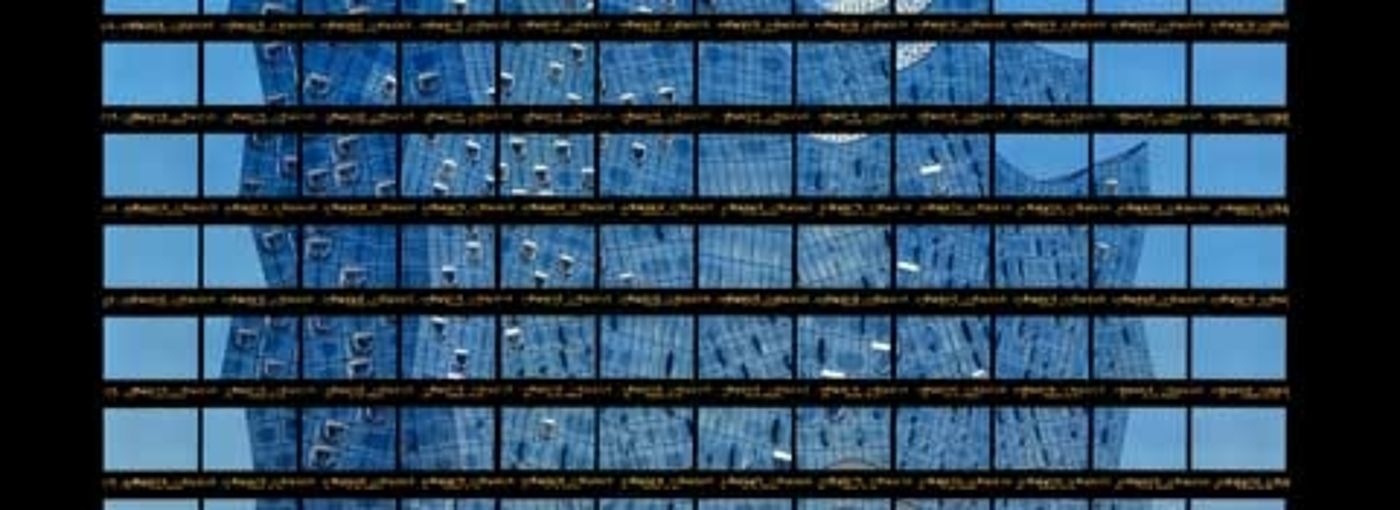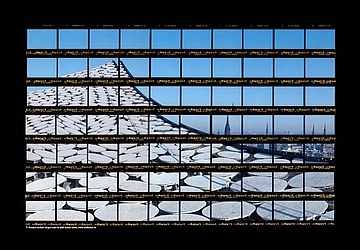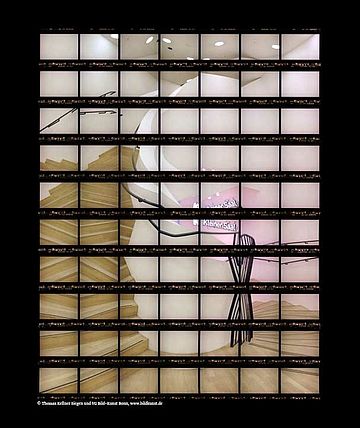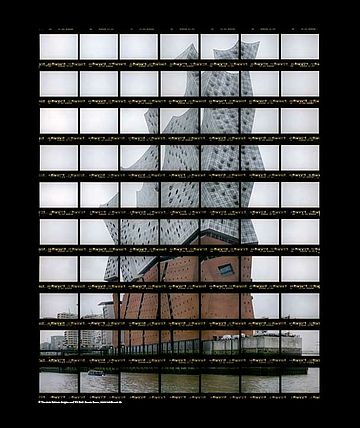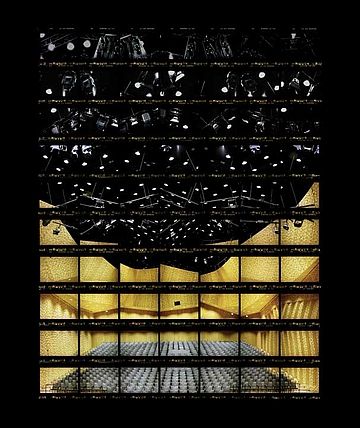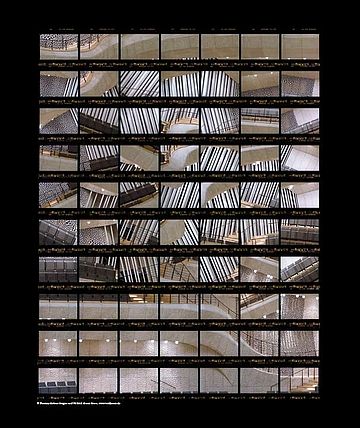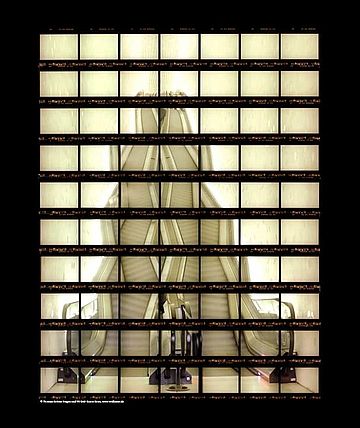He is a visionary room divider, a cubist with a camera who makes famous buildings dance in his works. Now Thomas Kellner has asked Hamburg's Elbphilharmonie to sing his birthday serenade.
The concert hall of Hamburg's Elbphilharmonie is almost deserted this morning. Only one person is now making his way up and down the stairs of this imposing sound space, which is usually home to music. He paces, counts his steps, and applies masking tape to the noble oak parquet at regular intervals. Thomas Kellner follows a precisely worked-out plan when taking pictures, marking shooting points in the hall according to his "picture score". In this score, which is initially roughly sketched out in pencil on a sheet of paper, he composes his image rhythms for analog film strips, which will later be used to reassemble the building, arranged one below the other.
Photo art on film strips
Contact sheet is called this kind of direct print of a negative film laid on a sheet of paper. "Hardly anyone younger than thirty is familiar with the principle from the days of analog photography today," Kellner says with a laugh. Contact sheets play an important role in the work of the photo artist, who was born in 1966. He uses them to visualize his idea of "synthetic cubism." The working material, the working process becomes part of the artwork, right down to the visible perforation of the negative film.
A kind of score provides the working basis for the necessary camera movements during shooting. After all, the view of a building is broken down here by the artist into individual images and then reassembled in the chronology of the photographed film strip. Each shot must fit harmoniously into this flow of images. Otherwise, the finished overall work is completely unusable. "Without sketches, you'd just wiggle the camera around and eventually wonder, 'Did I just trigger here now?" the photographer explains.
Waiter makes the room vibrate
The shooting process that now follows requires great concentration: press the shutter release, advance the film, a small turn of the body, a short movement and release again. Frame by frame, a room is thus lined up, strip by strip, the large overall image is filled with sometimes up to 60 rolls of the 35-mm film material - and often only one roll with 36 individual exposures.
The finished work is always more than the sum of its parts. In Thomas Kellner's interior motifs of the Hamburg concert hall, for example, a dynamic quake of images is created that sets the viewer's senses vibrating. Here, the Elbphilharmonie suddenly begins to dance. Kellner photographs the foyer of the architectural icon built by Swiss architects Herzog & de Meuron folded like Japanese origami. The escalators at the building's entrance snake through the picture in an angular white space, and in a shot of the exterior façade, the roof of the Elphi opens up to the sky, lambently bluish.
First the Eiffel Tower wobbled
Thomas Kellner photographed his first image of dancing architecture back in 1997. Much of what characterizes his portraits of famous buildings today was already inherent in the motif of the Eiffel Tower in Paris back then: The movement within a given grid, the vibration, the liberation from the conventions of photographic image. We find all of this also in his new images of the Elbphilharmonie.
In October 2021, Thomas Kellner was commissioned to photograph images for the "Elbphilharmonie Magazin" to mark the fifth anniversary of the Elbphilharmonie. Until May 6, 2022, some of the resulting works were exhibited under the title "Dance of Resonance" at the Visulex photo gallery in Hamburg.
Editor's tip: Curious? Then make a note of the date of PHOTOPIA from October 13 to 16, 2022. The Festival of Imaging will bring analog photography to life in its own exhibition area!
